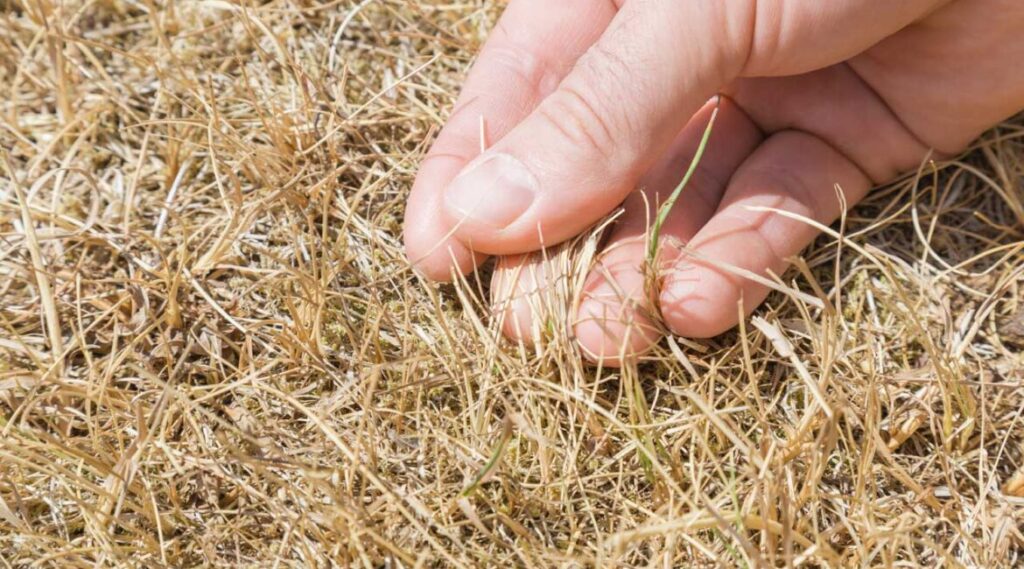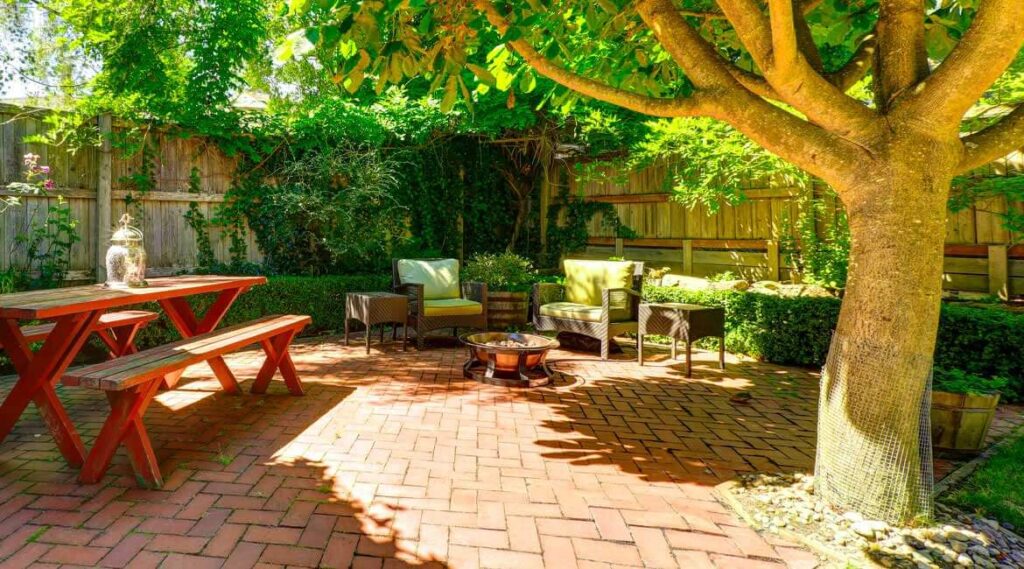We love summer and its long, hot days when we can lounge by the lake or the pool. We are often happy to spend a few hours in the air conditioning or at least in the shade of a big tree, bottle of water in hand. There are those days when even the smallest physical effort requires all the energy in the world… well, the same is true for your lawn. In the middle of summer, when the sun is blazing and the rain is scarce, it is common to see yellowed and dry lawns that look very unhealthy, even dead. But don’t worry! Your lawn is simply dormant.
What is the dormant state for lawns?
When grass suffers from intense heat and, more importantly, a lack of water, it goes into a latent state that allows it to survive: dormancy. During this period, the beautiful green gives way to a yellow-brown, straw-like color, and it is easy to think that it is dying before your eyes. Yet, underneath this deceptive appearance, your lawn is alive and well, but asleep. All of the available water and nutrients are being used to feed the root system that is the basis of the plant’s survival at the expense of the aerial part of the grass blade, giving it that impending death appearance.
The lawn can remain in its dormant state for up to 6 weeks without causing much long-term damage. After that time, if watering restrictions continue and rainfall is still scarce, it is quite possible that some areas of your lawn will not green up again. Dead patches will need to be repaired by replacing the grass that could not survive the stress of the drought.
4 tips to save your lawn
You can give your lawn a helping hand during its dormant period to help it regain its vigor more quickly when warmer days return:
- Avoid trampling
During the dormant season, avoid walking on your lawn as much as possible. It is under a lot of stress right now and needs all the energy it can get to stay healthy. Don’t be an additional stressor.
- Water thoroughly
Lawns need about an inch of water per week. If this need is not met by rainfall and your municipal by-law allows it, you can water deeply, which means for a long time, but less often. Water early in the morning to avoid evaporation losses and the development of fungal diseases. Also respect the level of absorption of your soil, it is likely that a dry soil will not accept 2.5 cm in one go, the surplus will run off and this is not desirable. Heat waves often rhyme with watering restrictions: be well informed to avoid heavy fines.
- Mow regularly and properly
The height of mowing has a direct impact on the length of the roots and therefore on the quality of your lawn. The longer the grass, the longer and stronger the root system. It is therefore easier to meet its water needs and thus resist drought. Throughout the season, be sure to mow regularly and never cut more than a third of the height of the grass. Your Nutrite Expert also recommends a height of about 8 cm to keep your lawn dense and strong. Sharpen the blades of your mower so that the cut is clean and does not cause injury to the grass, making it more vulnerable to insects, disease and of course, drought. During heat waves or when the grass is dormant, it does not grow or grows very little. So avoid mowing during this period… give yourself a break… both of you.
- Fertilize at different times of the year
Fertilizer won’t bring your lawn back to its beautiful green color in a snap, but a good fertilization spread out over the year will allow your lawn to be healthier and more resistant to various stresses such as heat and lack of water. Entrust the task to your Nutrite Expert who knows the needs of your lawn so well. He will know how to use professional products with the right dosage at the right time during the season.
Lawns that are water stressed are more vulnerable to insects and weeds. Check your lawn carefully to make sure you are not dealing with a bug infestation rather than a dormant situation. If, ten days after the return of cooler temperatures or despite rain or watering, your lawn does not regain its vigor, contact your ally for a durable and healthy lawn without delay. Your Nutrite Expert will then be able to make the right diagnosis and establish a plan with you to restore your lawn as quickly as possible.




